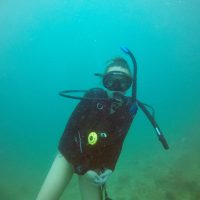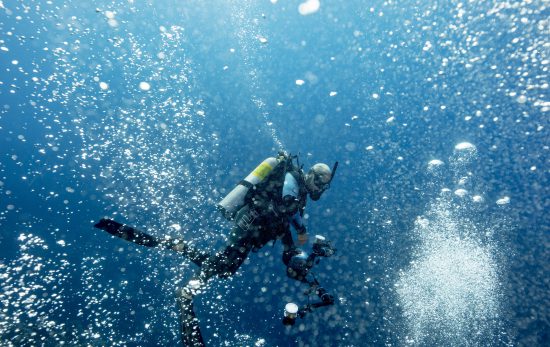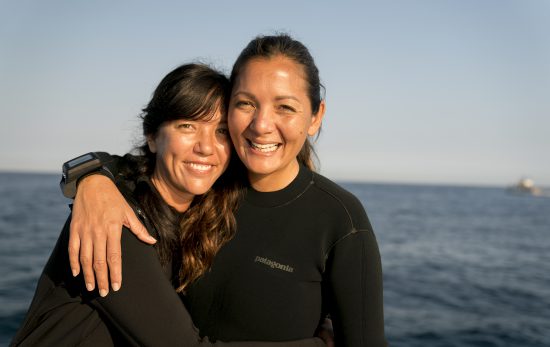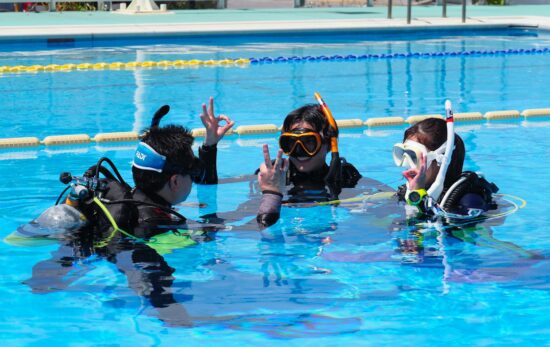If you’re a non-diver or a newbie to the underwater world, scuba diving equipment might seem like a complex muddle of metal, rubber, neoprene, hoses and other oddities. You might also wonder if it’s really all necessary. Well, the short answer is yes – here’s why:
- Mask, snorkel and fins: these are essential for seeing and moving more easily through water.
- SCUBA (Self Contained Underwater Breathing Apparatus): this set typically comprises a cylinder, BCD and regulator, enabling divers to breathe underwater.
- Instruments and dive computers: these are key for safety (like knowing how much air you’ve got left or how deep you are).
- Weights: without enough weight, most divers wouldn’t be able to sink beneath the surface.
- Exposure protection: usually a wetsuit or drysuit, these keep divers warm, safe and comfortable.
Do You Really Know Your Scuba Diving Equipment?
We all use scuba diving equipment each time we dive, but do we really know the names and purpose of each of our scuba gear components? Maybe you only know the acronym (BCD) or slang (occy) names for certain items? After all, we all know that diving is full of acronyms, slang words and shortened terms!
So, whether you’re about to purchase your first set of beginner diving gear, want to learn more about the equipment you’ll be using on your PADI Open Water Diver course, or if you just don’t want to mispronounce anything, here is a basic guide to scuba equipment for beginners.
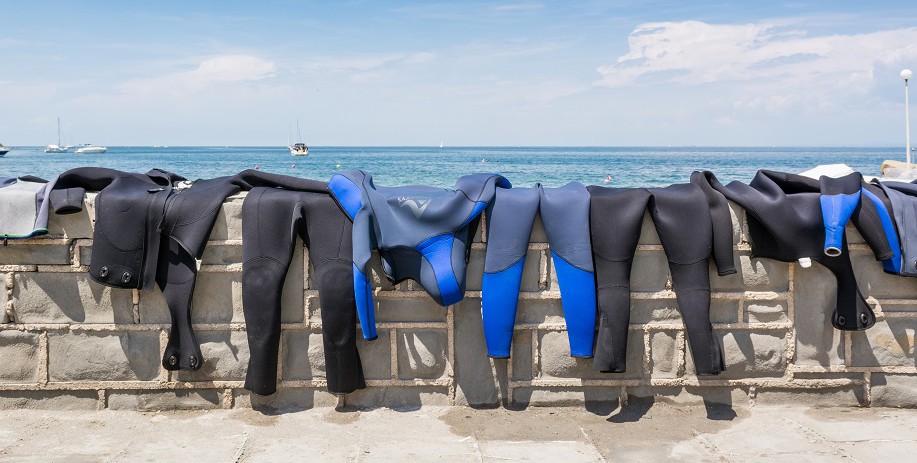
Wetsuit, Wetty, Steamer, Springy
Being divers, the majority of us have come across or regularly wear a wetsuit. But have you ever heard other divers refer to their wetsuit with a different term? Some refer to their wetsuit as a ‘wetty’ (slang for wetsuit), ‘steamer’ (long wetsuit) and ‘shorty’ or ‘spring suit’ (short wetsuit). Whatever you call yours, wetsuits are a popular choice of exposure protection, which is essential for protecting your skin and keeping you warm while you are diving down into the deep blue.
- 7 Tips for Putting on Your Wetsuit
- Myths and Misconceptions About Peeing in Your Wetsuit
- How to Recycle an Old Wetsuit

Dry Suit
A dry suit (or drysuit) is another type of exposure protection and one particularly suited to colder climates. Waterproof construction, built-in boots and seals around the neck and wrist keep water out. So, they offer extra warmth by (and the clue’s in the name) keeping you dry during a dive. The PADI Dry Suit Diver course introduces the different types, as well as skills to use drysuits safely.
- A Dry Suit Buyer’s Guide for Scuba Divers
- How to Know When It’s Time to Buy a New Dry Suit
- 6 Things You Don’t Know About Dry Suit Diving
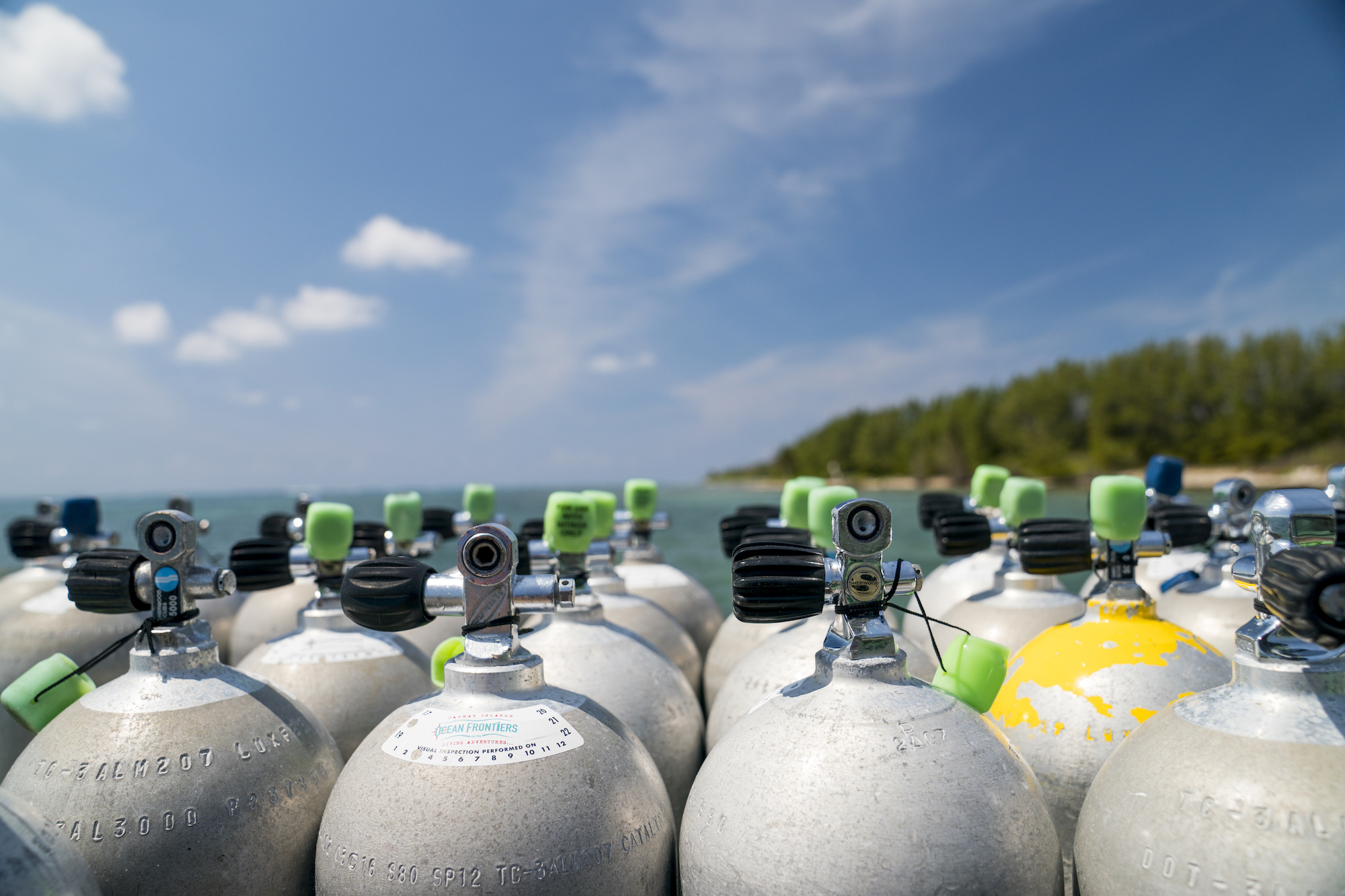
Cylinder, Tank
If asked ‘what equipment do you need for scuba diving?’, chances are a scuba tank will be one of the first things that come to mind. It contains the high-pressure breathing gas you’ll rely upon underwater, controlled by a valve that connects to your regulator. Typically made from steel or aluminium, cylinders range in size and capacity but 12L (metric countries) or 80 cu ft (North America) are the most popular. Although you might see different configurations (such as twin cylinders or sidemount), a single tank strapped to your BCD is the most common setup for beginners.
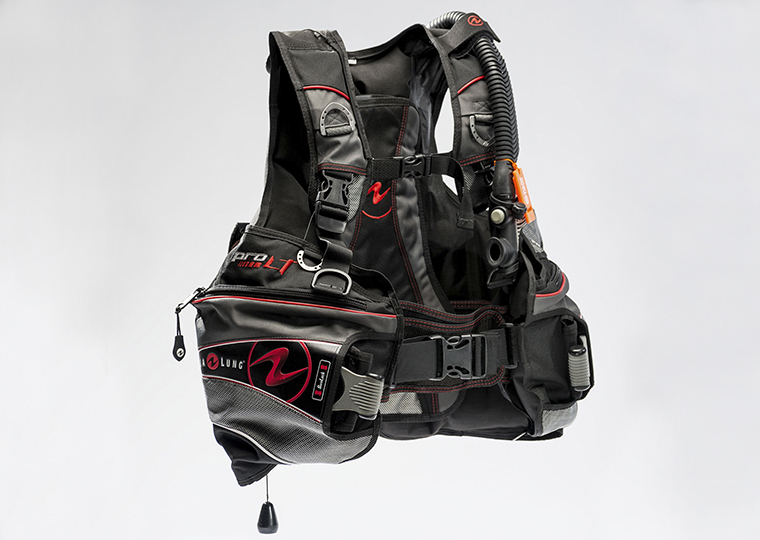
Buoyancy Control Device (BCD), Buoyancy Compensator (BC)
Most divers refer to their Buoyancy Control Device (or Buoyancy Compensator) as their BCD or BC for short. As the name suggests, this piece of scuba diving kit is crucial to any diver’s buoyancy and essential to have when diving. With practice, your BCD will help keep you neutrally buoyant (well, that’s the goal) as you either inflate or deflate it (by adding or removing air).
It also carries your tank, and you can use parts of a scuba BCD to clip on your compass, dive light or cutting tool. Some divers even use an integrated weight system that has pockets to hold their weights (this will minimise or eliminate you having to wear a weight belt).
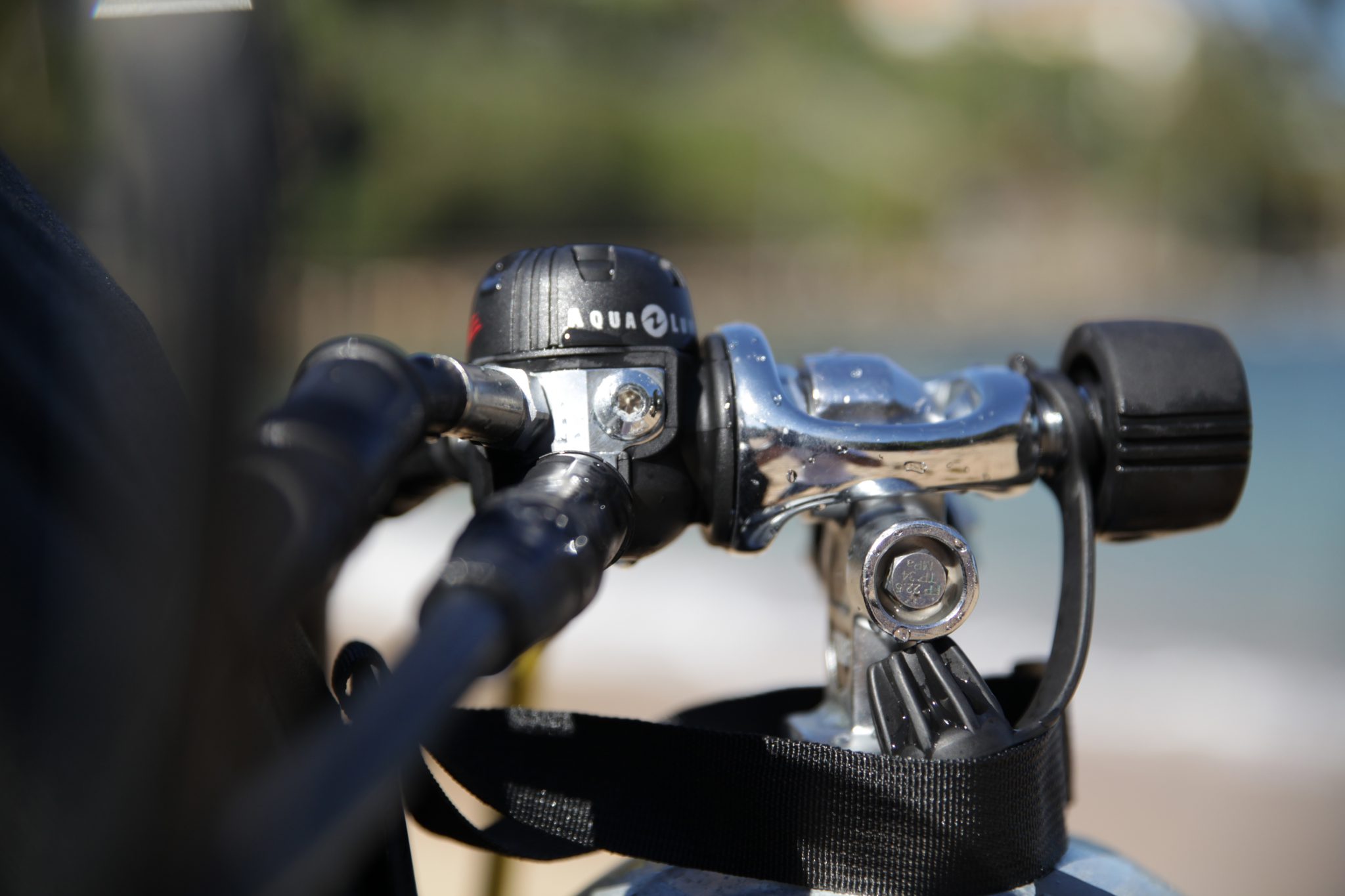
Regulators: First Stage, Primary Second Stage and Alternate Second Stage
While many divers have only heard the term ‘regulator’ during their diving course or in conjunction with ‘don’t forget your dust cap’, this piece of equipment is essential to any dive.
First Stage
Your first stage is actually used to attach your primary and alternate second stages (via connecting hoses) to the cylinder valve and reduce high-pressure gas to a breathable pressure.
Primary Second Stage
Your primary second stage (also called a demand valve, or DV) is the part that you put in your mouth which then allows you to breathe underwater.
Alternate Second Stage
Haven’t heard the term ‘alternate second stage’? This is actually an alternate air source for your buddy, also known as an octopus, occy or buddy regulator. Your alternate second stage is a backup in case you need to share your air with another diver in out-of-air emergencies. Your octopus is generally always a bright colour, such as neon yellow, so that it can be easily seen by all divers underwater.
Without these pieces of scuba diving equipment, you wouldn’t be able to breathe underwater.
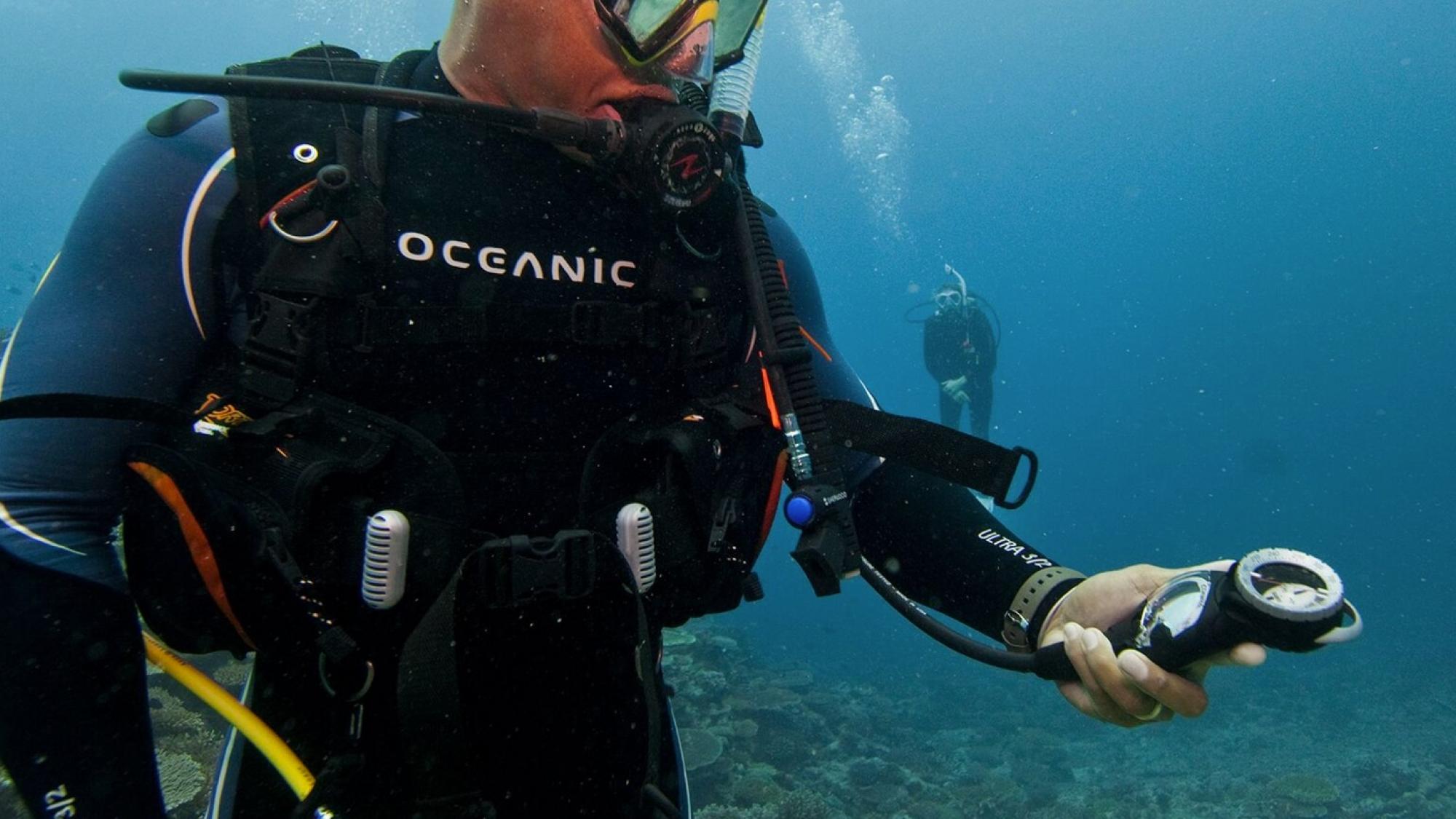
Instruments: Submersible Pressure Gauge and Dive Computer
A diver must always carry a submersible pressure gauge (SPG) along with a dive computer during each dive. Your submersible pressure gauge allows you to view how much air you have remaining in your cylinder. Your dive computer will measure your depth, dive time and also help calculate how long you can stay at particular depths underwater. Furthermore, depending on what type of dive computer you have, you might also have extra features such as:
- Dive planning tools
- Enriched air compatibility
- Temperature
- Compass
- Integrated air monitoring
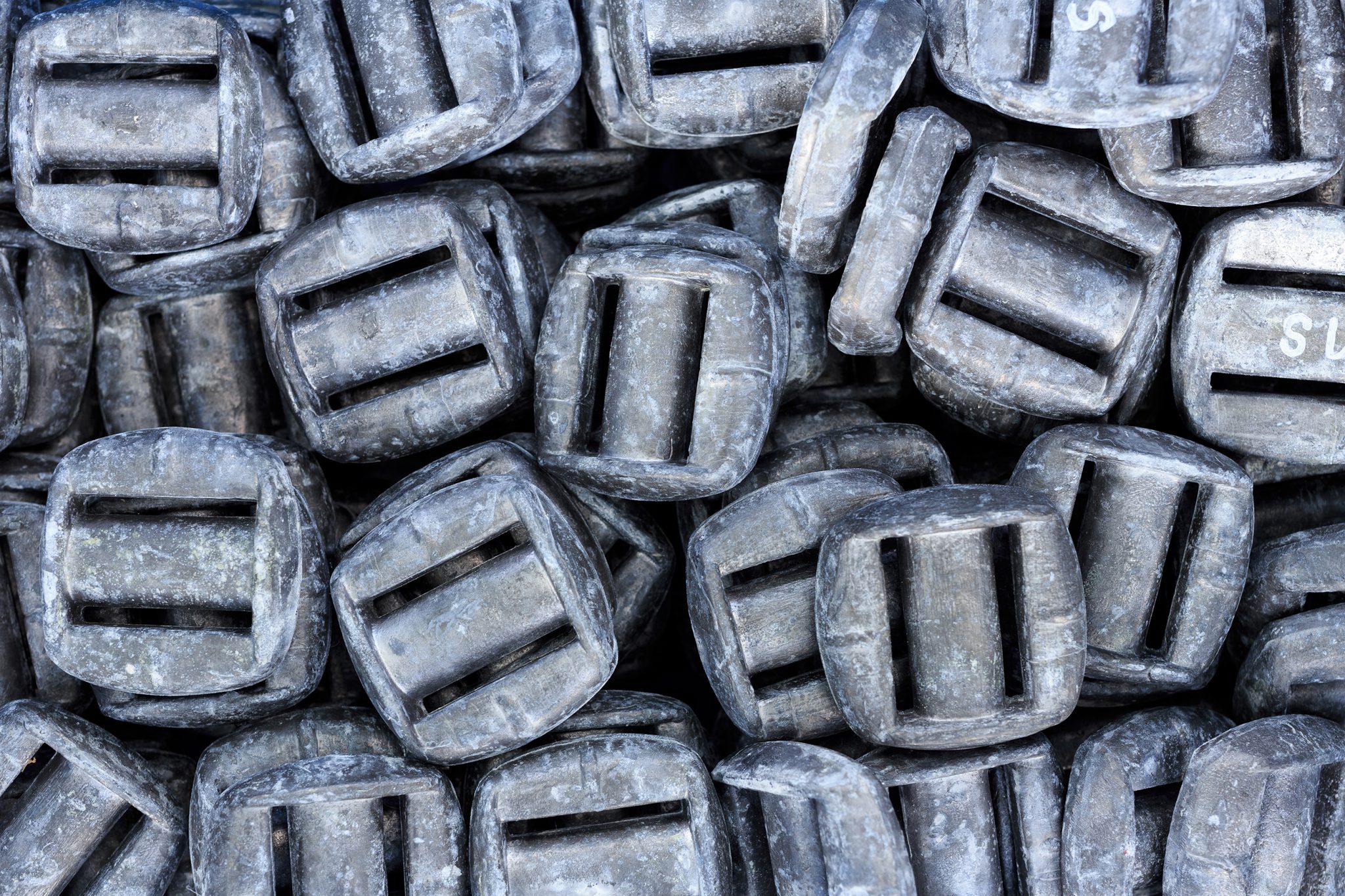
Weights: Integrated Weights and Weight Belts
Who has jumped into the water and either sunk straight to the bottom or floated on top of the water even after deflating? Do you struggle to maintain your buoyancy or keep tipping forwards and rolling sideways? You might need to rethink your weighting and trim.
Most divers either wear a weight belt while diving or use an integrated weight system that holds their weights in the weight pockets. While all divers generally need extra weight to get to the bottom, it is entirely up to the diver and their equipment whether they would like to wear a weight belt or carry their weights in their BCD.
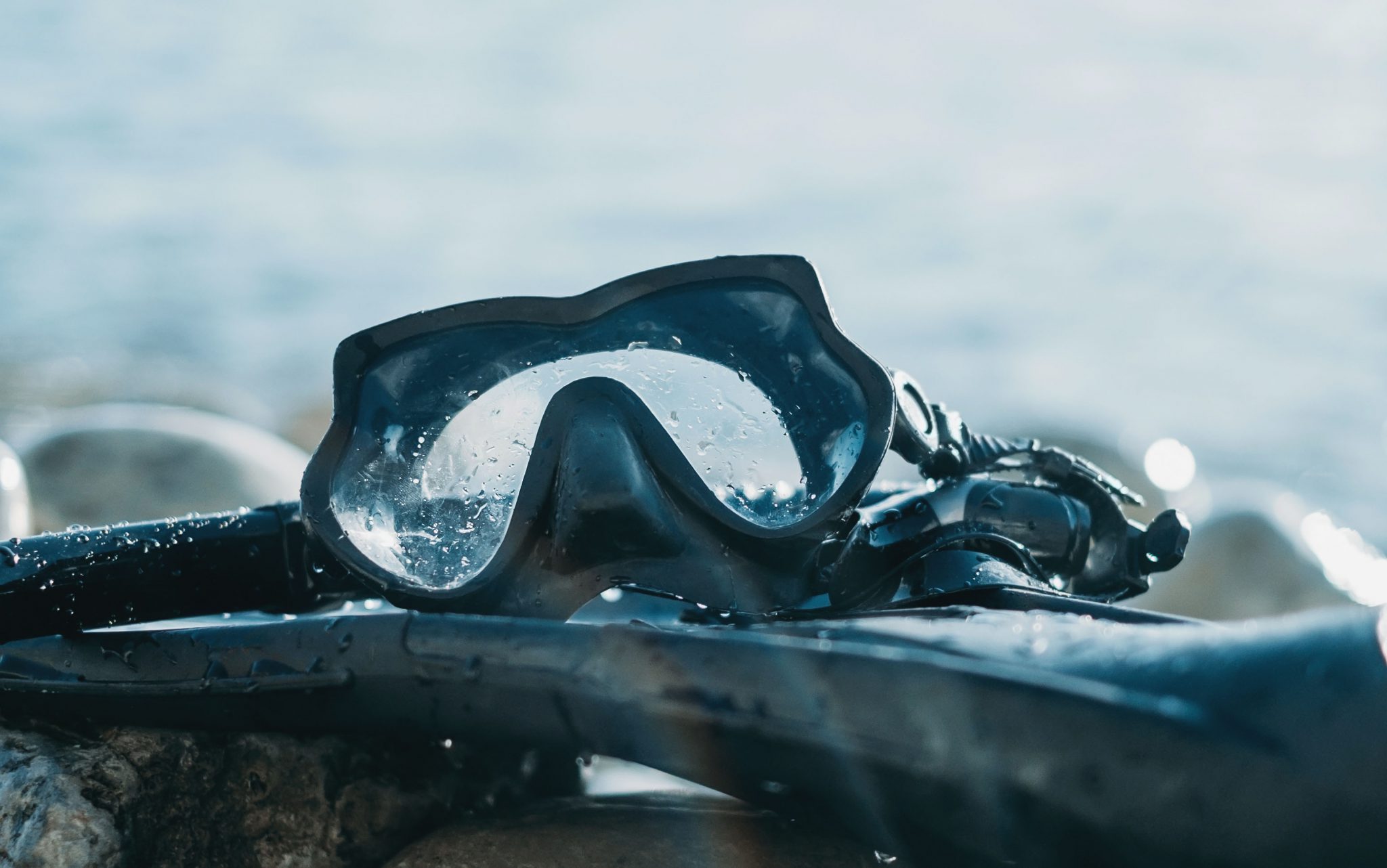
Mask, Snorkel and Fins
All divers should be diving with a mask, snorkel and fins:
Mask
As we all know, human eyes are not designed to be used to see underwater. So a diving mask is the perfect solution! After all, who wants to go diving and miss out on all the beautiful marine life underwater? Diving masks come in all different shapes, sizes and colours, so make sure you buy one that fits properly. Otherwise, you will need to quickly learn how to master the ‘clear water from your mask’ skill from your Open Water Diver course!
- How To Prepare A New Mask For Scuba Diving
- Tips for Preventing Mask Fog
- Moustache Divers: Tips for Improving Your Mask Seal
Snorkel
Many divers ask why they need to wear a snorkel while diving. The answer is simple – so that you can preserve precious air before and after your dive. Whether you have air left in your tank or not, you can easily swim (and breathe) to safety.
Fins (Not Flippers!)
Your fins are essential to any dive to help you not only control your movement in the water, but also help increase your speed and agility. Not to mention, they are also the perfect piece of basic diving equipment to help identify your dive buddies underwater!
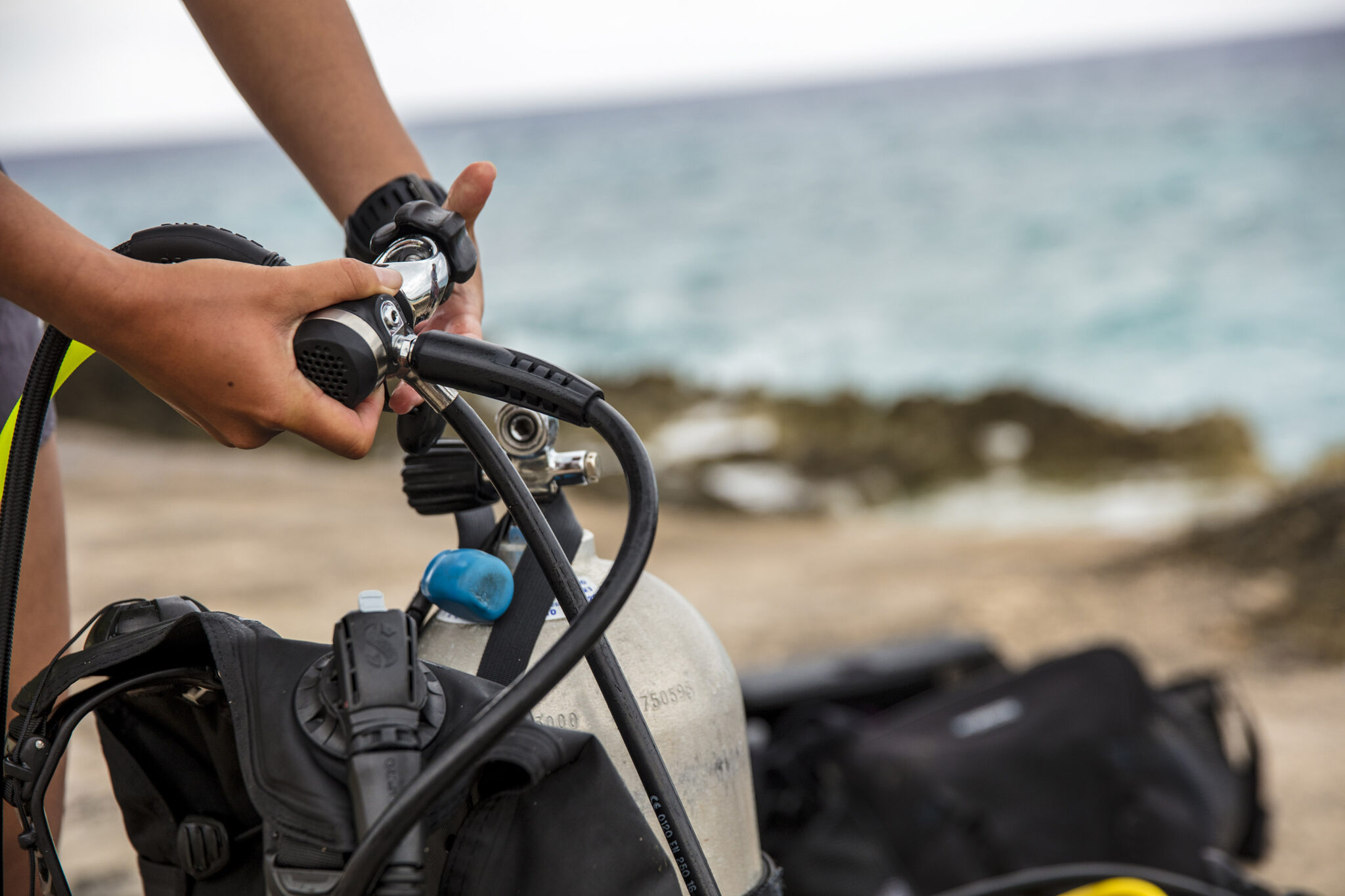
Get to Know the Different Parts of Scuba Diving Equipment
So, did you know the purpose and names for these pieces of different scuba diving equipment? Learn more about your own scuba diving kit and maintenance, and how to make basic scuba diving equipment repairs and adjustments by taking the PADI Equipment Specialist Specialty Course.
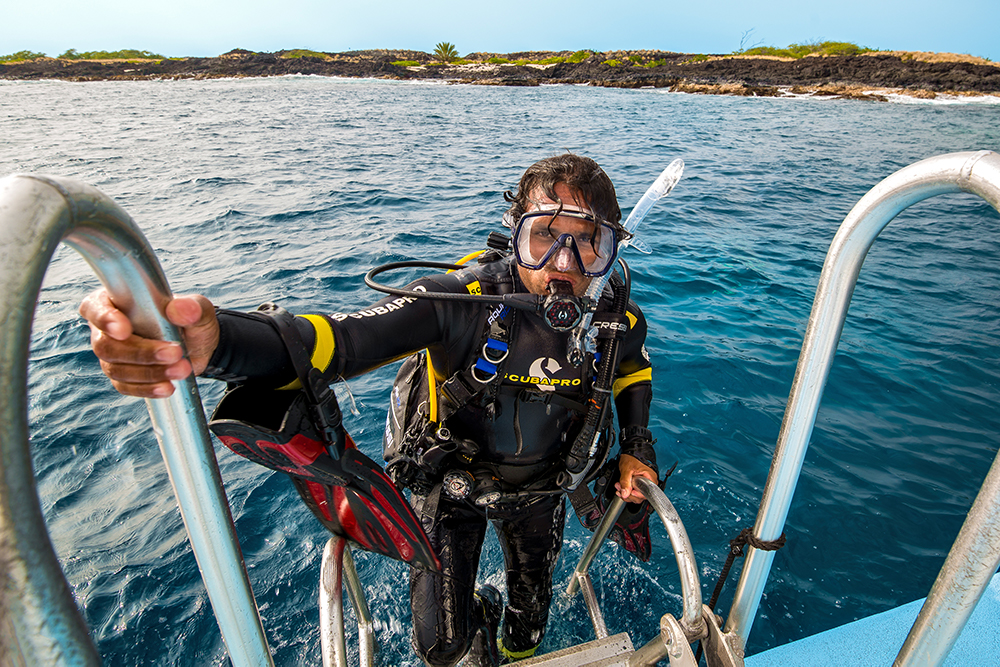
Choosing and Buying Dive Gear
If you’re looking to buy your very own beginner scuba gear package (or want to learn how to use scuba gear), get in touch with your local PADI Dive Shop. They’ll help with equipment advice tailored to the diving you’ll be doing, as well as recommended courses to help you get the most out of your new kit.
- Buying Your Own Scuba Gear: Pros, Cons and Practical Advice
- How to Know When to Replace Your Dive Gear
Related Reading:
Essential Dive Gear for Ocean Conservationists
6 Pieces of Dive Gear Every Female Diver Must Have
Choosing Dive Gear for Children
6 Ways to Store and Secure Your Gear While Diving
8 Scuba Accessories Divers Can’t Live Without
